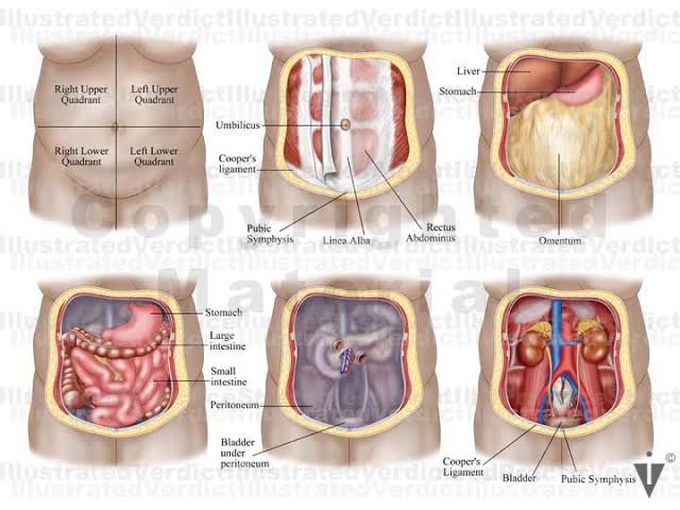


Anatomy of Abdomen
The definition of the human abdomen is the anterior region of the trunk between the thoracic diaphragm superiorly and the pelvic brim inferiorly. The anterior wall of the abdomen has nine layers. From outermost to innermost, they are skin, subcutaneous tissue, superficial fascia, external obliques, internal obliques, transversus abdominis, transversalis fascia, preperitoneal adipose and areolar tissue, and the peritoneum. The peritoneum is one continuous membrane; however, it is classified as either visceral (lining the organs) or parietal (lining the cavity wall). A peritoneal cavity is therefore formed and filled with extracellular fluid used to lubricate the surfaces to reduce friction. The peritoneum is composed of a layer of simple squamous epithelial cells. The subcutaneous tissue of the anterior abdominal wall below the umbilicus also separates into two distinct layers: the superficial fatty layer known as Camper's fascia, and the deeper membranous layer known as Scarpa's fascia. This membranous layer is continuous with Colles fascia within the perineal region inferiorly. The true abdominal cavity consists of the stomach, duodenum (first part), jejunum, ileum, liver, gallbladder, the tail of the pancreas, spleen, and the transverse colon. The posterior wall of the abdominal cavity is known as the retroperitoneum.The retroperitoneal structures include the suprarenal glands, aorta and inferior vena cava, duodenum (parts 2 to 4), pancreas (head and body), ureters, colon (descending and ascending), kidneys, esophagus (thoracic), and rectum.One can use the mnemonic SAD PUCKER.

